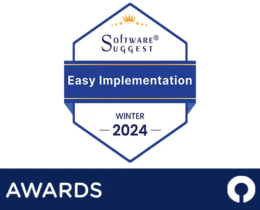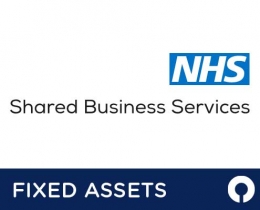Integrated Fixed Asset Management
Crossing the Finance vs Facilities divide to develop a joined-up approach to Fixed Asset Management that works for the whole organisation.

Crossing the Finance vs Facilities divide to develop a joined-up approach to Fixed Asset Management that works for the whole organisation.

Expert Insight
 Mike Clements is a senior consultant at FMIS with over 20 years experience in deploying integrated asset management and equipment tracking systems around the world.
Mike Clements is a senior consultant at FMIS with over 20 years experience in deploying integrated asset management and equipment tracking systems around the world.
To contact Mike or any of our consultants, please contact us here.
You can usually tell what a new client is looking for from an asset management system before you even speak to them. Just look at their job title.
If they are from finance, they probably want fixed asset accounting software to manage depreciation or leases. If they are from IT, it is usually asset tracking for the company’s IT equipment and if they are from facilities or operations, then they often want something to track and schedule maintenance.
Admittedly, this is an over simplification, but it does illustrate the way that fixed asset management has often suffered from a very siloed approach when in practice the different disciplines in asset management are by definition, interdependent.
To understand the potential of having an integrated approach to managing your assets, it is helpful to look at the issue from the point of view of each area of the business:

Emma is the Fixed Asset Manager. This means that Emma is responsible for calculating depreciation, tracking lease payments, creating the various reports required by management and posting the relevant journals at period-end. The finance team maintain a fixed asset register on an Excel spreadsheet. Different departments within the business are supposed to inform finance whenever an asset is added, disposed of or moved within the business. In practice, few people outside of the finance department even know of this process and even then, not all of them will follow it all of the time.
The end result is that the business is tracking, insuring and depreciating large numbers of ghost assets, while at the same time unaware of the location of others and still others are simply not recorded on the register.

Eric is the Workshop Manager for the company. He is responsible for all the factory floor equipment as well as the tools used by engineers in the field. The company invested in a tool tracking system a few years ago, but it doesn’t handle maintenance so Eric still tracks this manually using paper-based work orders.
Eric knows that the company spends a lot on maintaining old equipment and has argued for the business to invest in new equipment, but finance will not approve the capital expenditure without a full audit of existing equipment that is shown on the asset register. Eric started an audit last year but put the project on hold when he realised how out of date the finance asset register was, planning to resume it when “things were quieter”.

Vikram is the IT manager. His team are responsible for all the company IT equipment and track it using specialist IT tracking software. The software is ideal for his team and works well for large static assets such as servers, but Vikram is frustrated that so much of his budget is taken up with smaller items like cables, keyboards and even laptops that are frequently transferred within the business but these movements are not tracked within his tracking tool.
One manager recently ordered a laptop for a new starter in his team. When Vikram looked back, he discovered that the same team had purchased three new laptops in the last year despite several staff members leaving that team. When he asked about the other laptops, the team manager told Vikram that the laptops had been passed on to other teams when staff left but he was not sure where they were now.

Creating an integrated approach to asset management can have a transformative impact on business efficiency and reporting:
Creating a joined-up approach to asset management will require you to overcome a number of potential blockers:
Any holistic approach will require a change in three key processes:
Effective identification of new assets will require a coordinated approach to procurement. There are two key points where the identification of the equipment and then the asset needs to be harmonised:
Hopefully your purchasing process already identifies how new purchases should be treated at the point of order. Most organisations will have clear criteria for determining whether an asset is current (consumable) or fixed. Effectively classifying assets at the point of order is important for building a coherent register and tracking that asset over the full lifecycle.
Purchase orders may be generated either within the same system where the asset will be tracked or created in a separate ERP/finance system and then imported. If the asset management system includes its own Purchase Orders module like FMIS, this should allow users to check the availability of an asset before raising a PO/Requisition without moving between systems. This feature cuts down on duplicate purchases and streamlines the approval process.
Goods receipt will be the first time the equipment/asset item will appear within the asset eco-system. It is important to synchronise this step between the ERP and Equipment systems. From an ERP perspective, the goods receipt process is normally only significant if the commitment has to be recognised. In a joined-up view, it is important that this goods receipt event is pushed into the equipment system (or goods receipt is recorded in the global equipment system and then sent through to ERP).
Operational goods receipt will involve recording serial numbers and any bar code reference that can then be added to the unique equipment ref assigned by the receiving operational equipment system. By also recording the related purchase order details, the physical equipment record can then be associated automatically with any AP Invoice voucher raised in the ERP system.
The invoice matching process is key to achieving an integrated approach to asset management. From a simple accounting perspective, invoice matching against goods receipt may be sufficient, but this approach (two-way matching) has a number of important limitations for effective asset tracking. Firstly, it usually requires the double-entry of much of the purchase information for an asset contained in the purchase order (PO). Where the PO is held in the same system as the asset is tracked, then this information can be automatically linked to the new asset and does not need to be manually input. Secondly, two-way matching creates a disconnect in the asset record. There is no ready link between the purchase record and the actual asset.
Finance teams will often stop tracking assets from the point of receipt. They are simply added to the register and depreciated for the expected useful life. In practice, the asset lifecycle is seldom so linear. Over its lifetime, a piece of equipment may be transferred, repaired, partially disposed of or re-lifed. When it fully is disposed of, it may be sold on or scrapped and there may be costs/proceeds arising from that disposal.
It is impossible to build up an accurate cost of ownership for an asset, or even to know what assets are currently active if there is a disconnect between tracking systems for finance and operations.
FMIS has implemented integrated fixed asset management in over 40 countries and over 30 years. For more information on how to get started with dashboards on your FMIS solution, please contact us via email at support@fmis.co.uk or call us on +44 (0) 1227 773003.



FMIS Ltd
167b John Wilson Business Park
Whitstable
Kent
CT5 3RA
United Kingdom
Phone:+44 (0) 1227 773003
Fax:+44 (0) 1227 773005
Sales:sales@fmis.co.uk
Support:support@fmis.co.uk

 Aerospace Asset Tracking Case Study for SPS Aero
Aerospace Asset Tracking Case Study for SPS Aero| Cookie | Duration | Description |
|---|---|---|
| cookielawinfo-checkbox-advertisement | 1 year | Set by the GDPR Cookie Consent plugin, this cookie is used to record the user consent for the cookies in the "Advertisement" category . |
| cookielawinfo-checkbox-analytics | 11 months | This cookie is set by GDPR Cookie Consent plugin. The cookie is used to store the user consent for the cookies in the category "Analytics". |
| cookielawinfo-checkbox-functional | 11 months | The cookie is set by GDPR cookie consent to record the user consent for the cookies in the category "Functional". |
| cookielawinfo-checkbox-necessary | 11 months | This cookie is set by GDPR Cookie Consent plugin. The cookies is used to store the user consent for the cookies in the category "Necessary". |
| cookielawinfo-checkbox-others | 11 months | This cookie is set by GDPR Cookie Consent plugin. The cookie is used to store the user consent for the cookies in the category "Other. |
| cookielawinfo-checkbox-performance | 11 months | This cookie is set by GDPR Cookie Consent plugin. The cookie is used to store the user consent for the cookies in the category "Performance". |
| CookieLawInfoConsent | 1 year | Records the default button state of the corresponding category & the status of CCPA. It works only in coordination with the primary cookie. |
| PHPSESSID | session | This cookie is native to PHP applications. The cookie is used to store and identify a users' unique session ID for the purpose of managing user session on the website. The cookie is a session cookies and is deleted when all the browser windows are closed. |
| viewed_cookie_policy | 11 months | The cookie is set by the GDPR Cookie Consent plugin and is used to store whether or not user has consented to the use of cookies. It does not store any personal data. |
| Cookie | Duration | Description |
|---|---|---|
| CONSENT | 2 years | YouTube sets this cookie via embedded youtube-videos and registers anonymous statistical data. |
| _ga | 2 years | The _ga cookie, installed by Google Analytics, calculates visitor, session and campaign data and also keeps track of site usage for the site's analytics report. The cookie stores information anonymously and assigns a randomly generated number to recognize unique visitors. |
| _gat_UA-48954022-1 | 1 minute | A variation of the _gat cookie set by Google Analytics and Google Tag Manager to allow website owners to track visitor behaviour and measure site performance. The pattern element in the name contains the unique identity number of the account or website it relates to. |
| _gid | 1 day | Installed by Google Analytics, _gid cookie stores information on how visitors use a website, while also creating an analytics report of the website's performance. Some of the data that are collected include the number of visitors, their source, and the pages they visit anonymously. |
| Cookie | Duration | Description |
|---|---|---|
| VISITOR_INFO1_LIVE | 5 months 27 days | A cookie set by YouTube to measure bandwidth that determines whether the user gets the new or old player interface. |
| YSC | session | YSC cookie is set by Youtube and is used to track the views of embedded videos on Youtube pages. |
| yt-remote-connected-devices | never | YouTube sets this cookie to store the video preferences of the user using embedded YouTube video. |
| yt-remote-device-id | never | YouTube sets this cookie to store the video preferences of the user using embedded YouTube video. |
